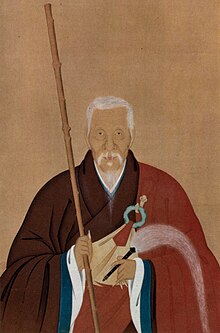This is a blog page for my forthcoming book
Leaving for the Rising Sun: Chinese Zen Master Yinyuan and the Authenticity Crisis in Early Modern East Asia from Oxford University Press. It sounds strange to have a blog page for the book rather than the author. However, there is really nothing interesting to blog about the author, who is simply an agent of a series of ideas, coming down from some mysterious places. The reason I want to keep a blog for a book at the time of its completion is simple: the book has its own life and its story has to be told. Here are a few reasons I think this blog page is worthwhile:
First, as I said in the preface, this book took me about fifteen years to complete. It is unusual to spend such a long time of period for a book project. This is simply because of my lack of confidence in handling the vast number of materials. My research experience, retrospectively, is an interesting journey which is worthy of reflecting and documenting.
Second, during the course of writing and researching on the topic, the manuscript was rewritten several times in very dramatic ways. I wanted to write a biography first and then changed back to standard academic narrative. An early draft has twenty chapters and now I have only seven. Many portions and details were cut but may be revived in the form of blogging.
Third, during such a long period, I have accumulated a lot of interesting sources and documents about this monk called Yinyuan in Chinese and Ingen in Japanese. However, many of them did not get into the book. I am afraid that I won't be able to publish a second book on the subject but these sources need to be shared with people for further studies.
Finally, for a long time, I have been an armchair researcher without going to Japan and Manpukuji where this monk became prominent. I justify myself for being distanced from possible influence of any contemporary perspective. The subject I study has to be put back in early Edo period. Too much exposure to its contemporary situation will limit historical imaginations. This is a healthy skepticism but may not be complete without reliving the presence of this Chinese monk by visiting the actual places. Eventually, I was lucky to have received support from Japan Foundation and Chiang Chingkuo Foundation to complete the book in 2013. Japan Foundation funded my summer research in Japan in the summer of 2013 and CCKF founded me a year of full time writing. During my stay in Japan, I visited many places and would like to report findings which can not be put in this book.
Of course, I can't hide the motivation to promote this book. My publisher suggests me creating a webpage for the book. As a newbie in the field of social media, let me try to meet their expectations. I am just told that the book is going to be out in November 2014.



